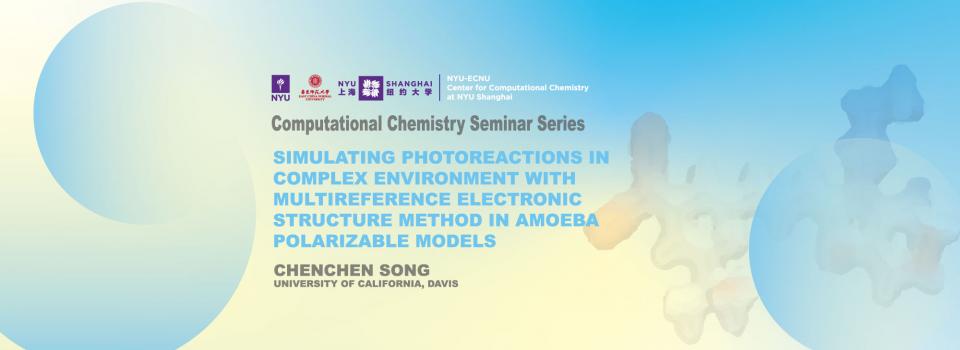
Meeting ID: 920 3159 5048
Passcode: 684087
- Join Via Zoom -
Abstract
Many important photoreactions in life, such as vision in animals and photo-perception in plants, take place in solvents or in macromolecular systems and are affected by their interactions with the environments. Because the excited wavefunction is generally localized on the chromophore, this suggests a natural multi-scale description of the system in which the electronically excited chromophore is treated quantum mechanically and the surroundings are treated classically. In this talk, I will discuss recent progresses towards rigorous simulation of non-adiabatic molecular dynamics with nonequilibrium environment effects. In terms of the classical model that is used to describe environment effects, I will discuss the development of embedding approach in AMOEBA polarizable models, which is often considered as one of the most sophisticated polarizable models for solvents and biomolecules. In terms of the electronic structure method used to describing the electronically excited chromophore, I will discuss how tensor factorization techniques can be applied to multi-reference perturbation theory, which provides accurate excited state properties with significant reduction in computational cost. These recent advances in theoretical methods have the potential to improve our understanding about the evolutionary advantages of these photoreactions and may also lead to the possibility of rationally controlling photodynamics through the careful design of the environments.
Biography
Chenchen Song was born and grew up in Dalian, Liaoning. She attended Tsinghua University for undergraduate studies majoring in Chemistry, and graduated from Tsinghua in 2012. She then attended Stanford University and joined the theoretical chemistry research group of Professor Todd Martínez. She graduated from Stanford in 2018 and her thesis research focused on developing new electronic structure methods for studying excited state dynamics of large molecular systems. Following that, Chenchen went to UC Berkeley to join the research group of Professor Jeff Neaton for postdoctoral research, where she continued developing new theoretical methods for describing excited state phenomena. In 2021, Chenchen joined the faculty at UC Davis. Inspired by the active agriculture and plant science research at Davis, her current research program focuses developing new theoretical methods for studying photoreactions in biological environment, with the goal of better understanding how plants perceive light signals, adapt to different light conditions, and respond to light stress.
Seminar Series by the NYU-ECNU Center for Computational Chemistry at NYU Shanghai


